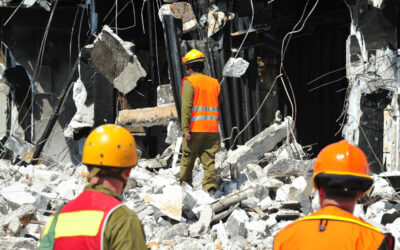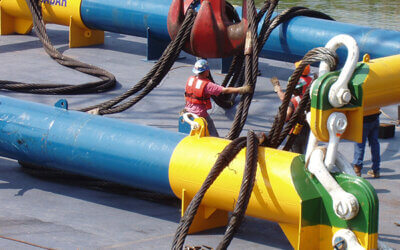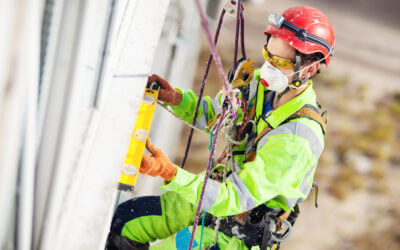While it might not seem like material handling requires much dangerous work, that’s a dangerous assumption. Especially when workers are handling extremely heavy materials like lumber or working with equipment like cranes, forklifts, and conveyors, workplace accidents can easily happen. Even fully trained and certified workers can be injured on the job, but workers who are not trained for this type of work are putting themselves, and their coworkers, at extreme risk.
While you could write a book about safety requirements for the material handling industry (and OSHA already did) keep reading to learn about some of the best safety practices for the material handling industry.
What Specific Hazards Are Found in the Material Handling Industry?
Specifically, OSHA cites the following as common hazards in the material handling and lifting industry:
- Back injuries, strains, and sprains from manually lifting heavy and bulky objects
- Falling objects resulting from improperly stacked materials or equipment
- Fractures and/or bruises from colliding with objects
- Fractures and/or bruises from being caught between objects or inside “pinch points”
- Incorrectly cutting securing devices and ties holding heavy objects together
How Can Workers Stay Safe When Working With Material Handling Machines?
In the material handling industry, workers trained to use mechanical equipment to move, lift, and store material can do their jobs much more effectively. However, this material handling equipment also increases the risk of workplace injuries. That means employees should take additional precautions when operating this equipment.
According to OSHA, this means: “Employees should avoid overloading equipment when moving materials mechanically by letting the weight, size, and shape of the material being moved dictate the type of equipment used. All material handling equipment has rated capacities that determine the maximum weight the equipment can safely handle and the conditions under which it can handle that weight. Employers must ensure that the equipment-rated capacity is displayed on
each piece of equipment…”
Additionally, workers should adhere to the following best practices:
- Minimize the risk of equipment tipping or material falling by centering the load close to the mast
- Don’t counterbalance an overloaded forklift under any circumstances
- Before moving equipment, make sure the load is arranged in the lowest position
- Read and follow the equipment’s operational guidelines at all times
- Whenever possible, cross-tier and/or pile stacked loads
Material Loading and Handling at Heights
Workers who operate material handling equipment at heights may be required to receive OSHA fall protection training, to use rigging equipment, and to follow other safety regulations. However, at the most basic level, OSHA’s three-step process for preventing dangerous slips, trips, and falls within the workplace is plan, provide, and train.
What does that mean exactly?
Plan for everything that could go wrong at your work site as well as how to prevent these disasters from happening in the first place. Go over every inch of your building or construction site and take a look at any possible area that might pose a threat to you, your employees, or passing civilians. If you identify any hazardous areas, quickly alert your team and make sure anyone who goes in that specific area is aware of the risk of a dangerous fall.
Provide all your employees with the necessary rigging equipment and safety gear to ensure a safe environment. Give each employee the appropriate fall protection equipment such as lifting chairs and rigging supplies.
Train your employees to identify hazards and use safety equipment. Everyone on the job site should have the necessary knowledge to ensure the safety of everyone. Administer fall protection certification, crane training, and any other important safety training that will help your employees.
If you’re in charge of your building or construction site, there will likely be a lot of workers operating dangerous machinery, lifting heavy equipment, and just walking around the site. The job needs to be done, yes, but the most important aspect of any project is safety. Before you even consider allowing your employees to work with the various rigging equipment and supplies, you should ensure that the entire area is safe so you can prevent falls and save lives.
If you want to learn more about safely working with material lifting equipment, rigging equipment, or fall protection training, contact CERTEX USA.





0 Comments